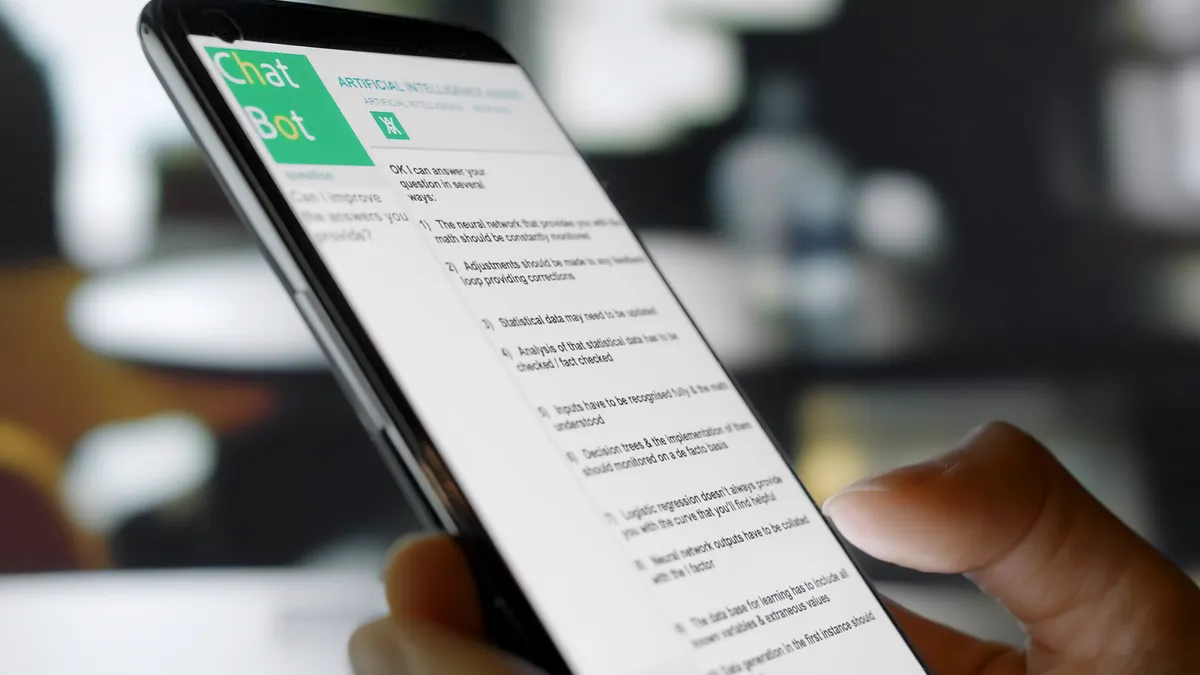Leading technology companies are extending the free licenses and trial periods of remote-friendly software offerings in response to the novel coronavirus (COVID-19) outbreak.
The promotions are particularly relevant in the communication and collaboration technology realm, as businesses around the world ask employees to work from home.
Cisco is offering 90-day Webex licenses to businesses that are not customers, the company announced Monday. It is expanding its free offer to include unlimited usage, support of up to 100 participants and toll dial-in on top of VoIP offerings.
Microsoft is rolling out updates to its free version of Teams that lifts user limits and allows users to schedule video calling and conferencing meetings, a Microsoft spokesperson told CIO Dive in a statement Tuesday. "By making Teams available to all for free for six months, we hope that we can support public health and safety by making remote work even easier."
In a similar move, Google Cloud is offering free, advanced video conferencing through Hangouts Meet for all G Suite and G Suite for Education customers, the company announced Tuesday. Google Cloud will make the enterprise-level capabilities — up to 250 participants per call, live streaming up to 100,000 viewers in a domain, and meeting recording — free to customers through July 1.
Zoom too lifted time limits for meetings with more than two participants for its free offering in China and is proactively monitoring server capacity.
Emergency response and the open office
In an open office plan where coworkers are within arm's reach, proximity is top of mind amid an outbreak. An online survey of more than 1,000 U.S. adults from tech PR firm Bospar found half of Americans worry about contracting the virus because of open offices.
COVID-19 spreads through person to person contact in relatively close proximity — within 6 feet, according to the Centers for Disease Control and Prevention.
For business to continue uninterrupted, business continuity plans require rethinking the definition of an office.
While it is standard for companies to have a business continuity plan in place, many do not, said Frank Trovato, research director, Info-Tech Research Group, in an interview with CIO Dive.
As pervasive as remote work is, there are many organizations where it does not fit company culture, Trovato said. If employees are not at their desk, they're perceived as not productive.
Jobsite limitations
Obviously, remote work often isn’t possible in the construction industry, as workers are needed on site. As the New York Times noted in an article this week, following recommendations to work at home is “not so easy if your job is at a restaurant, a day care center or a construction site.”
Nevertheless, some construction firms are taking preventative measures. At St. Louis-based Clayco, chairman and founder Bob Clark has stopped all non-essential travel for its employees and is urging them to use virtual communication services instead.
“We are following the COVID-19 virus closely and are working very hard to keep up to date with the changing conditions across the globe, implementing processes focused on ensuring the safety of our team members, to that end until further notice, I ask that you and your teams hold on all travel, both domestic and international across all our operating locations,” Clark said in an email to employees, according to the St. Louis Business Journal.
Other construction-related work can be done using technology like virtual and augmented reality to not fall behind, if a jobsite needs to be shut down.
AR-enabled BIM clouds and 3-D visualizations can allow stakeholders to use a heads up display to view a jobsite, make drawings, or edit plans in real time, even away from the jobsite, or by using a drone.
Thus far, contractors in the areas affected by COVID-19 say that it hasn’t impacted work.
A temporary solution
Companies are leaning on remote work policies as contingency in case of staff exposure. On Monday, F5 Networks closed its headquarters in Seattle to sanitize the building after an employee came into contact with someone who tested positive for the virus, The Seattle Times reports. The company asked employees to work from home and use virtual meetings in place of large work events.
Twitter is "strongly encouraging" its global workforce to work from home in an effort to lower the probability of the spreading the virus "for us — and the world around us," the company said in a statement Monday.
Companies that enable remote work temporarily may learn the potential opportunity, Trovato said. And once companies allow staff previously not allowed to work from home the remote opportunity, "it's hard to put that genie in the bottle."
While the outbreak could spark remote work policy adoption, it could become an building block for a business continuity plan, necessary in facilities disruption, natural disasters or even snow days.
It doesn't have to be as dramatic as the outbreak, Trovato said. This is an opportunity for CIOs to be proactive in supporting the business and recognizing what something like the outbreak might mean, whether that's remote work or overall business continuity.
Construction Dive Associate Editor Zach Phillips contributed to this story.























